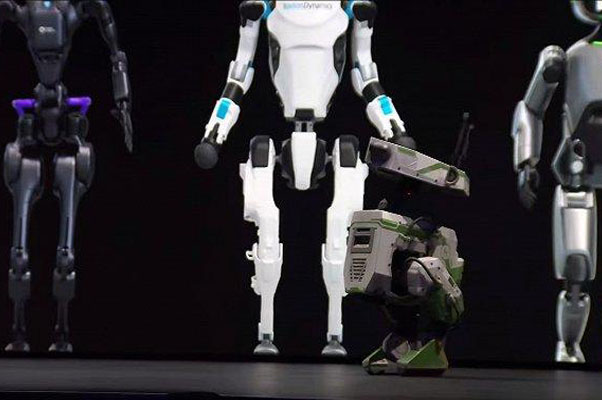As robotic technology advances rapidly, robots are being increasingly applied across various sectors such as industry, healthcare, and services. For robotics manufacturing companies, understanding and selecting the appropriate power supply solutions is crucial. Switching power supplies, with their high efficiency, stability, and adjust-ability, have become indispensable components in robotic systems. This article explores the application, advantages, and key technologies of switching power supplies in robots.
Working Principle of Switching Power Supplies
Switching power supplies convert input power into the required output voltage and current through high-frequency switching technology. Compared to traditional linear power supplies, switching power supplies offer several significant advantages:
- High Efficiency: Switching power supplies typically have a conversion efficiency of over 80%, whereas linear power supplies are less efficient.
- Compact Size: High-frequency switching technology significantly reduces the size of transformers and filters, making them suitable for compact robotic systems.
- Light Weight: Compared to traditional power supplies, switching power supplies are lighter, reducing the load on robots.
- Wide Input Range: Switching power supplies can accept a wide range of input voltages, adapting to different power environments.
Application of Switching Power Supplies in Robots
Motor Drives
The most common drive method in robotic systems is electric motors, including DC motors, stepper motors, and servo motors. Each type of motor requires a stable power supply to ensure performance and longevity.
- DC Motors: DC motors are widely used in small and mobile robots. Switching power supplies provide stable DC voltage, ensuring smooth motor operation.
- Stepper Motors: Stepper motors are used for precise positioning and control. Stepper motor drivers usually include a built-in switching power supply module to provide accurate voltage and current control.
- Servo Motors: Servo systems require high precision and fast response. Switching power supplies provide stable DC power to servo controllers, ensuring high-performance operation.
Control Systems
A robot’s control system includes main control boards, sensors, communication modules, and other electronic components that require highly stable and interference-free power. Switching power supplies provide stable output voltage and employ filtering and electromagnetic interference (EMI) suppression techniques to ensure the reliability of control systems.
Hydraulic and Pneumatic Systems
Although hydraulic and pneumatic drive systems do not directly rely on power supplies, their control valves, sensors, and actuators need stable power. Switching power supplies play an important role in these systems, providing the required voltage and current.
Communication and Sensing
Robots need to acquire environmental information through sensors and interact with other devices via communication modules. Switching power supplies provide clean, stable power to these modules, ensuring the accuracy and reliability of sensing and communication systems.
Power Requirements of Different Types of Robots
Industrial Robots
Industrial robots, widely used in manufacturing, assembly, and material handling, require high-power, high-reliability switching power supplies to drive servo motors and control systems. These robots often operate in high-load, high-frequency environments, necessitating power supplies with excellent thermal performance and long life.
Medical Robots
Medical robots, used in surgical procedures, rehabilitation assistance, and more, need precise and stable operation. Switching power supplies are crucial in these robots, providing highly stable and low-noise power outputs to ensure safe and accurate medical operations. These power supplies must also meet stringent medical safety standards.
Service Robots
Service robots, including home and logistics robots, operate in complex and varied environments. They need lightweight, flexible power solutions that support long runtime and efficient charging. Switching power supplies should have high energy density and a wide input voltage range to accommodate different usage scenarios.
Agricultural Robots
Agricultural robots perform field operations, harvesting, pesticide spraying, and more. Given the harsh working conditions (e.g., high temperature, humidity, dust), switching power supplies must have good protection features, such as waterproofing, dustproofing, and vibration resistance. Additionally, agricultural robots often require high power output to drive powerful motors, making power density and durability crucial.
Exploration Robots
Exploration robots, used in terrestrial and space exploration, need to operate in extreme environments. Switching power supplies must have high reliability and durability, functioning stably under high temperatures, low temperatures, and vacuum conditions. Moreover, these robots often require self-powering systems, such as solar panels, so switching power supplies should efficiently convert and manage various types of input power.
Selecting and Designing Switching Power Supplies
When selecting and designing switching power supplies, robotics manufacturing companies should consider the following aspects:
- Output Power and Voltage: Choose the appropriate output power and voltage range based on the robot’s load requirements.
- Efficiency: High-efficiency switching power supplies reduce energy loss, extend battery life, and lower heat generation.
- Size and Weight: Compact, lightweight designs help enhance overall robot performance.
- Interference Resistance: Switching power supplies should have good electromagnetic compatibility to avoid interfering with control systems and sensors.
- Reliability and Lifespan: High-quality components and design improve the reliability and lifespan of switching power supplies, reducing maintenance costs.
Future Trends
As robotic technology continues to advance, switching power supplies are also evolving to meet higher performance requirements and more application scenarios. Future developments in switching power supply technology may include:
- Higher Efficiency: Further improving conversion efficiency through new materials and processes.
- Intelligent Control: Integrating intelligent control chips for real-time monitoring and adjustment of power supplies.
- Modular Design: Providing scalable modular power solutions to suit different robotic systems’ needs.
- High Reliability and Long Lifespan: Developing power modules with higher reliability and longer lifespan to reduce maintenance and replacement frequency.
Conclusion
Switching power supplies play a crucial role in robotic systems. By understanding their working principles, application fields, and selection criteria, robotics manufacturing companies can better optimize robot design and improve product performance and competitiveness. In the future, with continuous technological advancements, switching power supplies will play an even more important role in the robotics field, driving the development of future automation.
